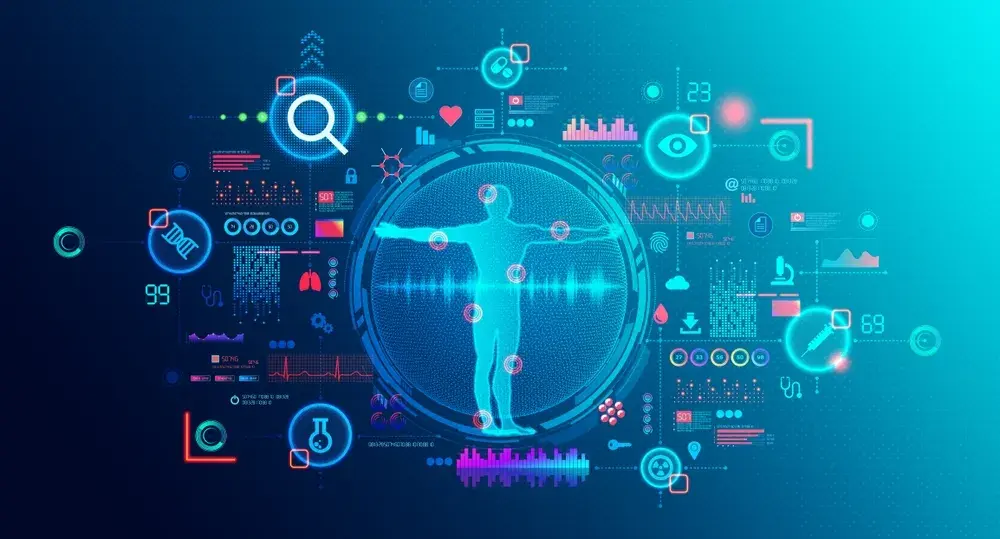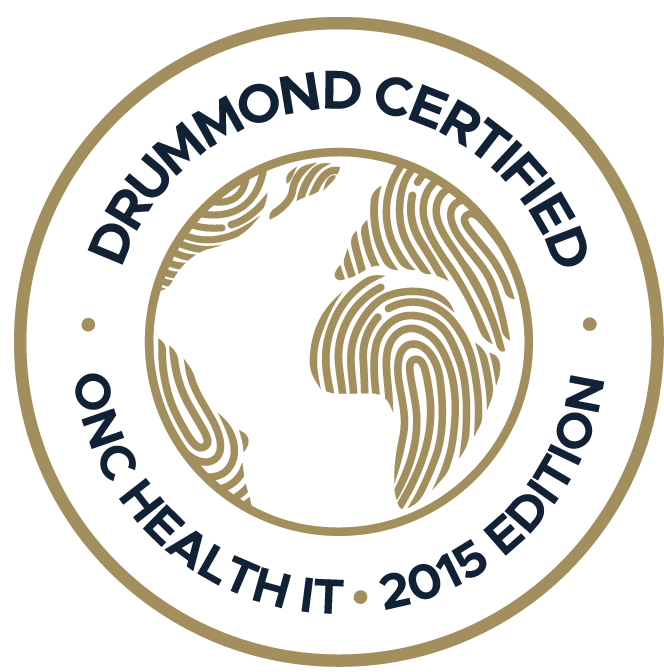From cameras to alarm clocks and phone books, everything you need is now on your smartphone. That’s because convenience is all that matters in the modern world. So why should managing your practice be any different?...
The Institute of Medicine and The Future of Family Medicine have highlighted the critical role of information technologies, particularly electronic health record (EHR) systems, in elevating the quality of care and ensuring patient safety.
The advent of Electronic Health Records (EHR) software has marked a pivotal transformation in family practices, streamlining patient information management and enhancing operational efficiency. This leap in technology has revolutionized the healthcare sector, empowering practitioners to handle data with unparalleled efficiency and fostering seamless workflows.
In family medicine, where the depth and quality of patient relationships are paramount, selecting the optimal EHR software and maximizing its utility are crucial steps. This blog intends to explore the key features that are essential in a family medicine EHR system, guiding the stakeholders toward making an informed decision that aligns with the demands of family medicine clinics.

1. Comprehensive Patient Management
In family medicine, the nature of care is holistic, addressing the health needs of patients at every stage of life. This approach necessitates a Family Medicine EHR system equipped with comprehensive patient management capabilities, ensuring that every aspect of a patient's health history is meticulously recorded and easily accessible.
Such a system is designed to capture detailed patient histories, including personal and family health information, which is vital in diagnosing and treating conditions that may be hereditary or lifestyle-related.
Moreover, comprehensive patient management extends beyond individual health records. It includes the management of preventive care measures, such as labs and vaccinations, which are central to the preventive approach of family medicine. This feature supports practitioners in scheduling, tracking, and reminding patients about their preventive care milestones, ensuring that care is proactive rather than reactive.
Additionally, the ability to manage chronic diseases efficiently is a hallmark of effective family medicine practice. A reliable EHR system facilitates this by allowing the tracking of patients' conditions over time, offering insights into treatment effectiveness and patient compliance.
2. Customizable Templates
Customizable templates in a Family Medicine EHR system are a game-changer for practitioners who cater to various health concerns across all ages. Unlike internal medicine, which focuses primarily on adult patients and their illnesses, family medicine encompasses a broader spectrum, including pediatrics, geriatrics, and everything in between.
This diversity necessitates a flexible EHR system that can adapt to the varied needs of a family medicine clinic. The power of customizable templates lies in their ability to be tailored to the specific workflows and treatment protocols of family medicine.
Whether it's a routine check-up, a vaccination visit for a child, or the management of chronic conditions in older adults, having the ability to customize templates ensures that practitioners can document care efficiently and accurately. This customization streamlines the documentation process and enhances patient care quality by ensuring that all relevant information is captured at each visit.
3. Patient Portal
The integration of a Patient Portal in a Family Medicine EHR platform exemplifies how technology can enhance the patient experience by fostering an environment of open communication and accessibility.
When it comes to internal medicine vs family medicine, the latter serves a wide-ranging demographic, from infants to the elderly, necessitating tools that cater to diverse patient needs and preferences. A patient portal addresses this by offering a single, accessible platform where patients of all ages can engage with their healthcare.
Through the portal, patients can easily schedule appointments, access their health records, request prescription refills, and communicate directly with their healthcare providers. This level of access is especially beneficial in family medicine, where managing the health of entire families requires coordination and clear communication.
4. Preventive Care Tracking
Preventive care tracking is a cornerstone of family medicine, making it stand out when it comes to internal medicine vs family medicine, which often emphasizes diagnosing and treating existing conditions in adults.
In family medicine, the emphasis is on preventing diseases before they occur, regardless of the patient's age. This proactive approach is where a Family Medicine EHR system becomes invaluable, offering powerful tools designed to monitor and manage preventive care measures across the lifespan.
With features tailored to track immunizations, lab screenings, and wellness visits, an EHR system allows practitioners to stay ahead of preventive care schedules, ensuring that patients receive timely interventions. This is particularly important in family medicine clinics, where the patient demographic spans from the youngest to the oldest, each with their own set of preventive care guidelines.
5. Integrated Billing and Coding
Integrated billing and coding within Family Medicine EHR software streamline the financial operations of healthcare practices. This ensures that billing processes are as efficient and accurate as the clinical care provided.
This integration is crucial in family medicine, where the diversity of services rendered requires a sophisticated approach to coding and billing. By automating these processes, the EHR system reduces the probability of human error, which can lead to claim denials and delays in reimbursement.
Furthermore, this feature supports the seamless transition from patient care to billing, capturing services as they are rendered and applying the appropriate codes automatically. This speeds up the billing cycle and enhances revenue flow, allowing practices to maintain financial health and focus more on patient care.
6. Interoperability
Interoperability in Family Medicine EHR software is a crucial feature that highlights the collaborative nature of healthcare. It allows seamless communication and data exchange between various healthcare providers, laboratories, hospitals, and other EHR systems.
This level of connectivity is essential in family medicine, where understanding a patient's complete health picture often requires integrating information from multiple sources. The ability to share health records effortlessly streamlines patient care and optimizes the quality of the care provided.
Moreover, physicians can access up-to-date information on patient visits, laboratory results, and treatments from specialists, ensuring that care decisions are informed and comprehensive. This is particularly beneficial in family medicine, where a patient's care involves a broad spectrum of healthcare services.

7. E-Prescribing
E-Prescribing is yet another transformative feature within efficient Family Medicine EHR software, marking a significant advancement in the way prescriptions are managed and dispensed.
This digital solution replaces the traditional paper-based prescribing process, offering a faster, safer, and more efficient method for prescribing medications. With e-prescribing, practitioners can directly send prescriptions to pharmacies from the EHR interface, reducing the risks of medication errors and improving patient safety.
Moreover, e-prescribing enhances convenience for both patients and healthcare providers. Patients benefit from reduced wait times at pharmacies and eliminating potential misunderstandings due to illegible handwriting. For providers, it streamlines the prescription process, allowing for quick access to a patient’s medication history and alerts to possible drug interactions or allergies, thereby facilitating informed decision-making.
Conclusion
Choosing a Family Medicine EHR system is a critical decision that impacts the efficiency, effectiveness, and quality of patient care within a family medicine clinic. The essential features outlined in this blog play a crucial part in improving the delivery of healthcare services.
These features streamline administrative processes, improve clinical outcomes, and enrich the patient experience by fostering a more connected, informed, and efficient healthcare journey. As family medicine practices continue to navigate the complexities of healthcare delivery, investing in an EHR system incorporating these key features will be instrumental in achieving operational excellence and superior patient care. Get A Free Demo Now!
Topics: Patient Care, EHR Solution, Specialty-Specific EHR, digital age, Medical Billing, RCM, EHR, Kiosk, EHR Features, ePrescribing, Family Medicine, Family Medicine EHR
RECENT POSTS



TOPICS
- EHR Solution (147)
- EHR (84)
- Patient Care (77)
- digital age (77)
- Medical Billing (72)
- Specialty-Specific EHR (70)
- Integrated EHR (59)
- Small Practice (56)
- Technology in Healthcare (55)
- Industry Update (50)
- New Technology (47)
- Medical billing services (45)
- RCM (43)
- EHR Features (42)
- Cloud-based EHR (39)
- Practice EHR News (39)
- Healthcare Office Management (37)
- Kiosk (28)
- ePrescribing (21)
- HIPAA Security (20)
- Telemedicine (14)
- EMR (12)
- Revenue Cycle Management (12)
- Practice Management Software (11)
- Client Favorites (10)
- Practice Automation (10)
- The ONE (10)
- Urgent Care (8)
- MACRA/MIPS (7)
- Patient Portal (7)
- Switching to New EHR (6)
- events (6)
- E-Prescribing (5)
- Product Updates (5)
- TeleVisit (5)
- AI Solutions (4)
- Insider (4)
- Internal Medicine EHR (4)
- MIPS (4)
- Podiatry (4)
- Podiatry EHR (4)
- AI Scribing (3)
- HIPAA (3)
- MIPS Reporting (3)
- Regulatory Updates (3)
- AI scanning (2)
- Billing for Private Practices (2)
- Clearinghouse (2)
- Dermatology EHR (2)
- EHR Scheduling (2)
- Foot and Ankle Care (2)
- Foot and Ankle EHR (2)
- Health records 101 (2)
- Integrated Practice Management (2)
- Medical Credentialing (2)
- Medical Practice Management Software (2)
- Orthopedics EHR (2)
- Patient Check-in Kiosk (2)
- Psychiatry EHR (2)
- Quality of Patient Care (2)
- Reporting Under MIPS (2)
- Risk and Liability in Medical Settings (2)
- Telehealth Platform (2)
- Telehealth Platforms (2)
- What Works Clearinghouse (2)
- AI-powered Medical Billing (1)
- Bariatric EHR (1)
- Behavioral Health Practices (1)
- Billing Communication (1)
- Cardiology EHR (1)
- Cash Flow (1)
- Chiropractic EHR (1)
- Data Security (1)
- Dos and Don'ts (1)
- EHR Guides (1)
- EHR KPIs (1)
- EHR Questions to Ask (1)
- EHR for Chiropractors (1)
- EHR for Chronic Illness (1)
- EMR vs EHR Difference (1)
- ENT EHR (1)
- Eligibility Verification in Medical Billing (1)
- Endocrinology EHR (1)
- Family Medicine (1)
- Family Medicine EHR (1)
- Gastroenterology (1)
- Gastroenterology EHR (1)
- General Surgery EHR (1)
- Geriatrics EHR (1)
- Guides (1)
- Healthcare Compliance Certification (1)
- Healthcare Practice Office Management (1)
- Help Center Videos (1)
- Insurance Reimbursement (1)
- KPI (1)
- Key Performance Indicators (1)
- Lab Processing (1)
- MACRA (1)
- Medical Billing Partner (1)
- Medical Coding Services (1)
- Mobile EHR (1)
- Nephrology EHR (1)
- Neurology EHR (1)
- Pain Management EHR (1)
- Pediatrics EHR (1)
- Physical Therapy EHR (1)
- Practice Cash Flow (1)
- PracticeEHR GO App (1)
- Pulmonology EHR (1)
- Simplify Practice Management (1)
- Staffing in Healthcare (1)
- Switch Medical Billing Providers (1)
- Urgent Care Medical Billing (1)
- Urology EHR (1)
- insurance claim denials (1)







